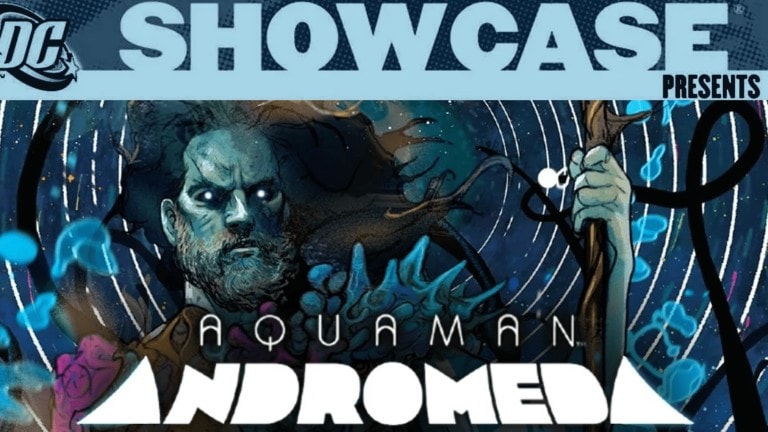DC Showcase: ‘Rogues’ Comic Review
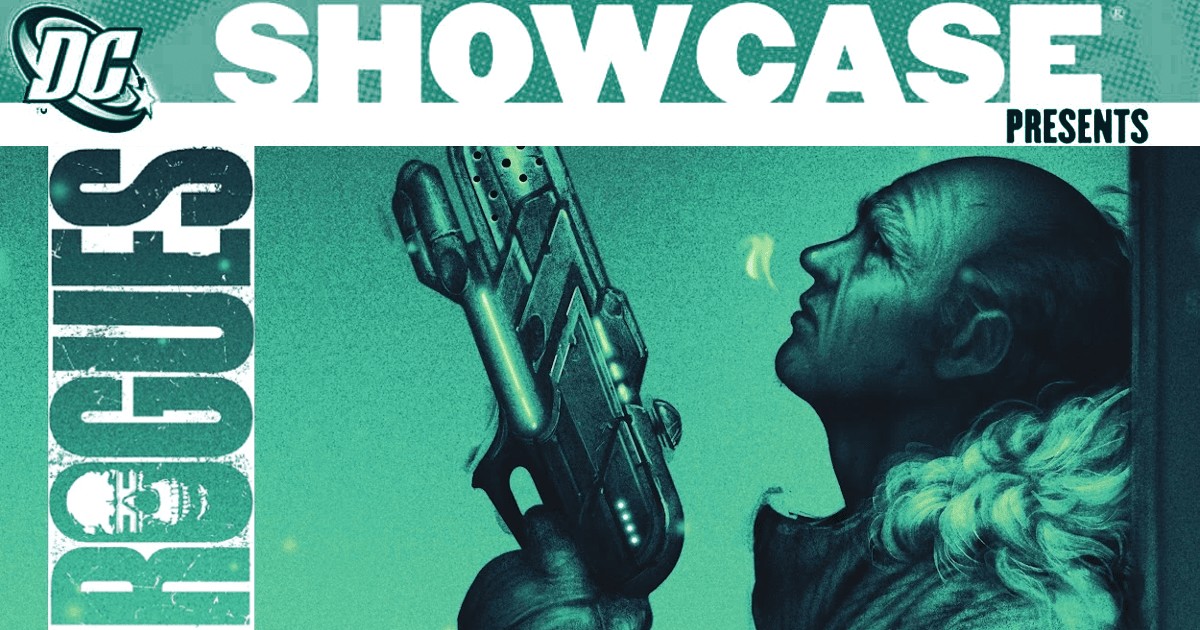
Rogues is a brand-new 4-part miniseries from DC Black Label. It’s one of the first standalone series ever to focus on the Rogues, an infamous group of Flash villains. As with any great story centered on morally gray characters, Rogues is filled with tremendous twists, intense moments, and significant character development.
Some of the most iconic Rogues include Captain Cold, Captain Boomerang, Mirror Master, Pied Piper, Top, Heat Wave, Weather Wizard, Trickster, and Golden Glider. Over the years, the line-up has changed, but their common goals have always remained the same. The Rogues mainly focus on petty theft, but sometimes their evil natures take them into darker territory. Rogues features many of their classic story elements, but as a mature Black Label series, it is set firmly outside of the main DC canon.
Each issue of Rogues contains 48 pages, written by Joshua Williamson and drawn by Leomacs, with colors by Mat Lopes and Jason Wordie. Issue #4 also features art by Daniele Miano, Federico Tardino, Luca Finelli, and Adriano Turtulici. Every issue starts as an excellent entry point into the story, even if the previous issue ended with a cliffhanger. This gives the reader a unique understanding of the previous issue and new context for the story ahead.
The Rogues were popularized by the hit Flash TV series, which is soon coming to an end. But with the new DCU just beginning, is there a chance the Rogues could reform on the big screen? Let’s dive into Rogues to learn how these characters compare to their TV counterparts and what stories we could potentially see in the future of DC Studios!

Captain Cold brings the team together again
Rogues is set in an alternate future. The team has been disbanded and the government has pardoned them in exchange for stopping their criminal activities. Each of the former Rogues is carefully monitored and has their own job. Some of them have a good life, others just work to live. But in these four issues, the team will assemble once again after a long 10-year hiatus.
The comic mainly focuses on Leonard Snart, who was once Captain Cold. He hasn’t talked to any of his old friends in ten years, not even his sister Lisa (the former Golden Glider) – because if the Rogues talk to each other, they’ll go to jail. Snart has become just another guy who let himself be broken by the system when he left his old life behind. Although he received a promotion in his new fabric work, he soon learns that even that was just to maintain the company’s good PR.
The plot begins when Snart hears about a huge amount of gold hidden in Gorilla City. Fed up with his day job, he begins planning one last heist. Snart sets out to recruit Golden Glider, Bronze Tiger, Trickster, Magenta, Mirror Master, and his old buddy Heat Wave back into the thieving life.
However, Snart quickly learns that his colleagues have adjusted to their new situations better than he has. Not everyone is ready to get back on the rogue path just yet. I really liked the dissonance this caused between Cold and the other Rogues, and it was fun to see Heat Wave not being a full-time psycho. Everyone had moved on, but Cold still had this feeling inside of him that he needed to steal again.
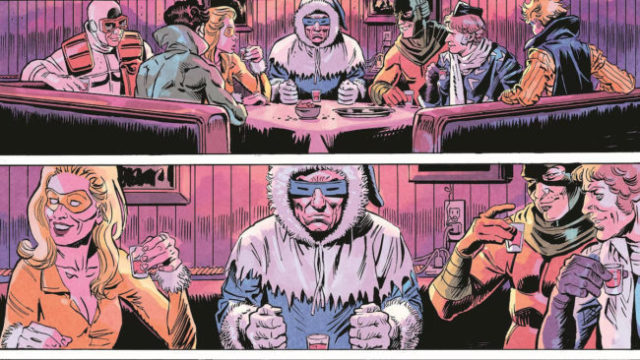
During the mission, Cold makes a major decision that affects not only him but all of them. A decision you can’t back away from, especially if you’re on such strict parole. This is the moment when Williamson’s writing kicks into high gear as things get more serious. The only way for the Rogues to go free is if they pull off the heist. Otherwise, they’ll go back to prison… or worse.
There is also a recurring background story about Sam Simeon (Ape) and his grandfather Gorilla Grodd. Sam is a former detective with superpowers similar to Grodd’s. While we see Sam’s hatred for Grodd, we also learn that Grodd has become the ruler of Gorilla City. He is like a big mob boss and is abusive towards his wife and child. But nothing is as it seems. Over the following issues, we discover more about Cold and Sam’s agendas, which are really similar in the end.
Unfortunately, I wasn’t a fan of how the gorilla story was told. Instead of constant teases and hype building, the story would have been stronger if Sam and Grodd got an entire issue to themselves. This way, we would have been able to learn about the whole situation in one place, without taking space away from the other characters, relationships, and history. The story is about them, not gorillas.
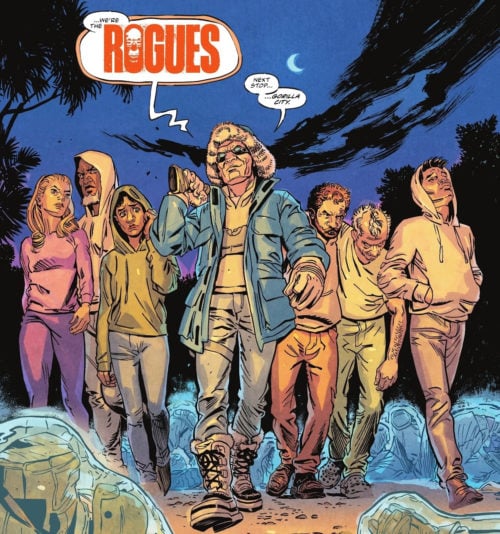
What also needs to be mentioned is Leomacs’ art, especially the character designs. They are truly unique in their own way. The artists decided to keep the classic look from older comics, but with slight updates. Looking at their faces, you can already tell their point of view on each situation and anticipate their decisions on the next page. The action scenes are also full of perfectly-fitting extra details, such as blood splatter, injuries, “add-on effects” and more.
This DC Black Label story is friendly for new readers
Like all Black Label stories, Rogues is a standalone comic series that doesn’t require you to know anything about DC to read it. Everything you need to know is mentioned in the story. Characters, lore, past events, characters’ motivations, and powers are all introduced perfectly. No prior reading is needed at all.
When you finish Rogues, I recommend reading Flash (1987) #19, 220-225, and Final Crisis: Rogues’ Revenge. In these comics, you can learn even more about them though their best stories in the main DC universe.
My personal history with the Rogues
The Rogues story I’m most connected to is the one told in the Arrowverse. Of course, I’ve read a lot of comics and watched movies/animated series, but the live-action version is possibly the best, in my opinion. Grant Gustin’s Flash series introduced a wide gallery of well-written Rogues. The most memorable were Captain Cold (Wentworth Miller), Heat Wave (Dominic Purcell), Trickster (Mark Hamill), Weather Wizard (Liam McIntyre), and Pied Piper (Andy Mientus).
In the show, Snart is inspired by Flash to become a hero. His version of Cold was more than just a complicated villain: Sure he liked to rob places, but he did not kill innocent people. This just wasn’t his M.O. Heat Wave also started as a jerk but evolved over multiple seasons in Legends of Tomorrow. By the end of the show, he had transformed into someone who cared about his teammates.
Weather Wizard and Trickster were only in a few episodes of The Flash, but their appearances were always iconic. From flooding all of Central City to threatening to explode family homes if Flash didn’t surrender, they brought a sort of impact to the series that other villains could certainly envy.
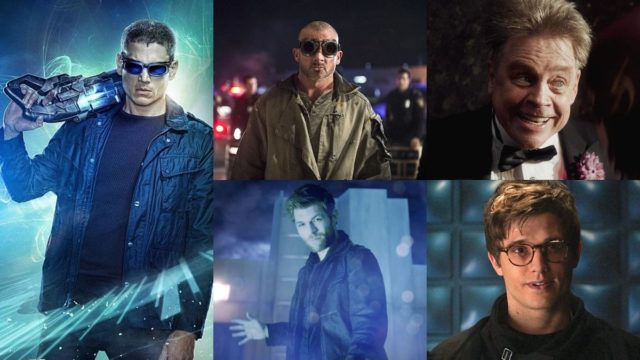
Also noteworthy is the new Captain Boomerang, Owen Mercer (Richard Harmon). He made his debut in the latest season of The Flash and played it perfectly from his first scene. This Boomerang is more cunning than the original Digger Harkness (Nick E. Tarabay). His cockiness and desperation were a real problem for Barry Allen, especially in Flash’s fight with Red Death (Javicia Leslie). To be honest, I’d really love to see Richard Harmon back as Captain Boomerang in the DCU.
Last on my list of Rogues is the Pied Piper. Hartley Rathaway is one of the most neglected characters from “the Rogues,” but has one of the most dynamic character journeys. In the beginning, he was a villain, then Barry’s teammate, and then a villain again. Fortunately, by season 9, the screenwriters gave him a well-deserved story arc. Still, after all these years, I’d like to see what would have happened if he had joined Team Flash permanently in the previous seasons.
Comparing the characterizations with those in The Flash series
Overall, Captain Cold, Heat Wave, and Pied Piper were usually written like anti-villains in The Flash TV show. But in the comics, this hasn’t always been the case. Over decades of appearances, most of their comic counterparts have undergone various “character changes” to suggest they each have a “hero” in them.
For example, even in Injustice 2: After everything that happened, and everything he lost, Captain Cold still teams up with Barry. But in Rogues, that would never happen. Even compared to other alternate universe comic books, the Rogues version of Snart is the most ruthless, with no moral objections. He’s “lawful evil”, as I like to say.
It’s difficult to compare this 4-issue comic to their years of appearances across multiple long-running Arrowverse shows. I prefer TV shows with many seasons that can explore characters’ histories and develop them. Matching that level of depth in a comic with only four issues is a very hard thing to write, especially with recognizable characters like Cold and Grodd.
In general, Rogues’ version of the characters is different from their other incarnations, but in my opinion, it’s for the better. For readers who know a lot about Rogues and the larger DC universe, it’s always good to see something new.
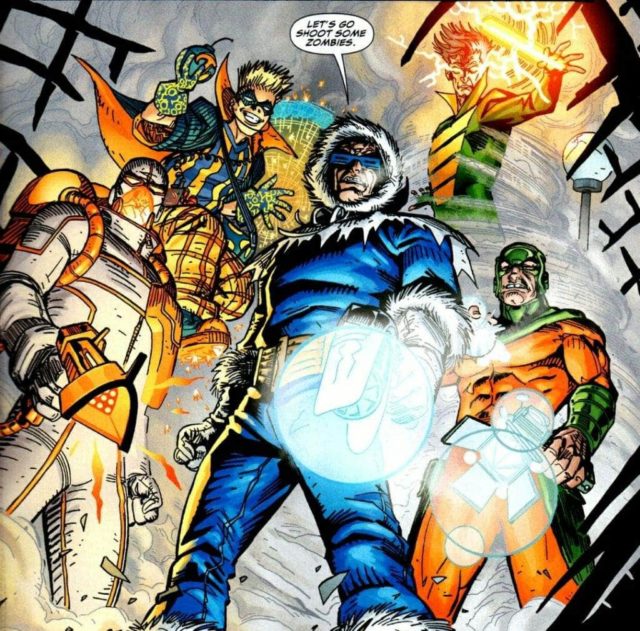
Lastly, Pied Piper doesn’t always belong with the Rogues in the comics, because he is more of an anti-hero. This makes Hartley a great example of a Rogue that must appear in an exact comic, with an exact story, at an exact time. But that’s also why I think that the Pied Piper should have been included in this comic. Rogues showed that even if you’re no longer a villain, a lot of people will see you as one. This theme could have been even more impactful if Hartley had been caught in the middle of it.
With a new DC Universe on the horizon, James Gunn’s new universe promises the space to adapt various stories into live-action Elseworlds films, series, and even games. Mixing old and new stories, concepts, and characters across mediums is something that could make the DCU’s version of the Rogues unique.
I would love to see the Rogues comic adapted as a live-action series with the style of The Suicide Squad, plus a few new surprises. I’m not a big fan of adapting something page by page, scene by scene. So if Rogues were to be adapted to a new medium, I would love a few different characters or even different story beats to keep the adaptation interesting for readers.
Final thoughts on DC’s Rogues
The whole story of Rogues is emblematic of the DC universe. Not because it is important for another series or concerns a particular character, but because it’s just another amazing comic in the Black Label/Elseworlds line from DC. It serves as a great example of how any story can be told at DC Comics. You don’t have to tie it to another series or maintain integrity with previous stories. And this is something that often works for the better when it comes to producing fresh stories with familiar characters.
When reading Rogues, be prepared for a truly devastating tale of human nature, old habits, trust issues, and life’s problems. Some of these things are only implied, but that too has its charm. Rogues shows us the true paradox of life itself, and that’s what’s great about this story. When you learn a deep, dark truth, it affects you, and that’s what makes this story special.
If you love the Flash show or want to learn why the Rogues are one of DC’s most beloved teams of villains, then read this series. You’re sure to find something that will encourage you to read more of their stories, both as a team and as individual characters.
Have you read any of this comic before? What did you think? Let us know on Twitter and remember to follow the site @MyCosmicCircus!
Check out our full list of DC Showcases here, including our review of Aquaman: Andromeda! Also check out our review of the Flash season 9 premiere!
DC Showcase: Aquaman: Andromeda
Review: The Flash Season 9 Premiere


